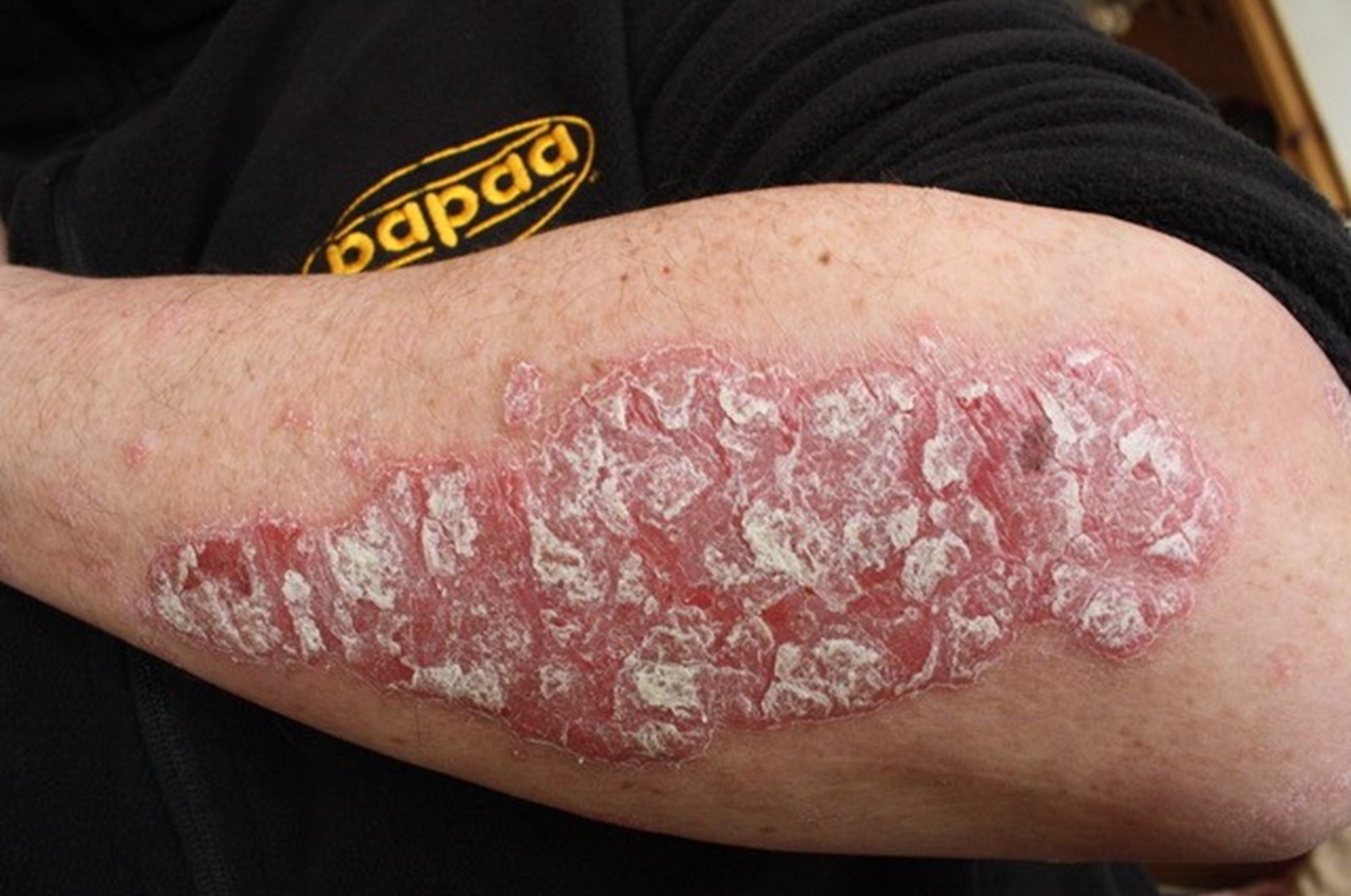What Is Psoriasis?
Psoriasis occurs when the immune system mistakenly attacks healthy skin cells, accelerating the skin cell life cycle. This leads to the accumulation of cells on the skin’s surface, forming scales and red patches that can be itchy and sometimes painful. The condition is not contagious but is chronic, meaning it can persist for years with periods of remission and flare-ups.
Causes and Triggers
Genetic Factors
A family history of psoriasis increases the risk of developing the condition. Certain genes have been linked to psoriasis, but having these genes doesn’t guarantee one will develop the disease.
Immune System Dysfunction
Psoriasis is an autoimmune disorder where the immune system attacks healthy skin cells by mistake, leading to the overproduction of skin cell
Environmental Triggers
Several external factors can trigger or exacerbate psoriasis symptoms:
- Infections: Strep throat and other infections can initiate or worsen psoriasis.
- Stress: High stress levels can impact the immune system, triggering flare-ups.
- Injury to the Skin: Cuts, scrapes, or sunburns can lead to the development of new psoriasis lesions.
- Medications: Certain drugs, including lithium, beta-blockers, and antimalarials, can trigger or worsen psoriasis.
- Lifestyle Factors: Smoking and heavy alcohol consumption have been linked to increased psoriasis severity
Common Symptoms
Symptoms of psoriasis can vary depending on the type and severity but commonly include:
- Red patches of skin covered with thick, silvery scales
- Dry, cracked skin that may bleed
- Itching, burning, or soreness
- Thickened or ridged nails
- Stiff and swollen joints (in cases of psoriatic arthritis)
Types of Psoriasis
Plaque Psoriasis
The most common form, accounting for about 80-90% of cases. It presents as raised, inflamed, red lesions covered by silvery-white scales, typically found on the elbows, knees, scalp, and lower back
Guttate Psoriasis
Characterized by small, drop-shaped sores on the trunk, arms, legs, and scalp. Often triggered by bacterial infections like strep throat
Inverse Psoriasis
Appears as bright red, shiny lesions that develop in skin folds, such as under the breasts, around the groin, or near the genitals and buttocks.
Pustular Psoriasis
Features white pustules (blisters of noninfectious pus) surrounded by red skin. It can be localized to certain areas or widespread.
Erythrodermic Psoriasis
A severe, rare form causing widespread redness, severe itching, and pain. It can lead to serious illness and requires immediate medical attention.
Diagnosis
Diagnosis typically involves a physical examination of the skin, scalp, and nails. In some cases, a skin biopsy may be performed to rule out other skin disorders and confirm the diagnosis.
Treatment Options
While there’s no cure for psoriasis, various treatments can help manage symptoms:
Topical Treatments
Applied directly to the skin, these include corticosteroids, vitamin D analogs, salicylic acid, and moisturizers to reduce inflammation and slow skin cell turnover.
Phototherapy
Controlled exposure to ultraviolet (UV) light can slow skin cell turnover and reduce scaling and inflammation. This includes UVB phototherapy and PUVA (a combination of UVA light and a photosensitizing agent).
Systemic Medications
For moderate to severe cases, oral or injected medications like methotrexate, cyclosporine, or biologics may be prescribed to suppress the immune system’s overactivity.
Biologic Therapies
Target specific parts of the immune system. These include drugs like adalimumab, etanercept, and ustekinumab, which have been effective in treating moderate to severe psoriasis.
Lifestyle and Home Remedies
- Moisturize Regularly: Keeping the skin hydrated can reduce dryness and scaling.
- Avoid Triggers: Identifying and avoiding personal triggers can help prevent flare-ups.
- Healthy Diet: A balanced diet rich in anti-inflammatory foods may help manage symptoms.
- Stress Management: Practices like yoga, meditation, and deep breathing can reduce stress-related flare-ups
When to See a Doctor
Consult a healthcare provider if you experience:
- Persistent skin issues that don’t improve with over-the-counter treatments
- Joint pain or swelling
- Signs of infection, such as redness, warmth, or pus
Early diagnosis and treatment can help manage symptoms effectively and improve quality of life
Conclusion
Psoriasis is a complex, chronic condition that requires a comprehensive approach to management. With the right combination of medical treatments, lifestyle adjustments, and support, individuals with psoriasis can lead healthy, fulfilling lives. Staying informed and working closely with healthcare providers is key to effective management.

